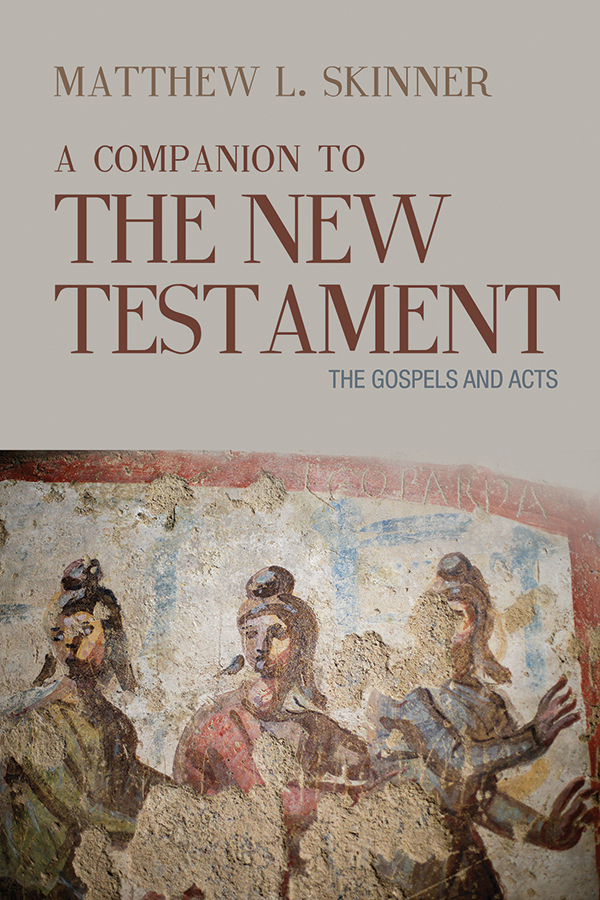A Companion to the New Testament
by Matthew L. Skinner
2020-03-20 15:17:06
A Companion to the New Testament
by Matthew L. Skinner
2020-03-20 15:17:06
A Companion to the New Testament draws readers deep inside the New Testament by providing a basic orientation to its literary contours and its ways of talking about theological matters. Designed especially for students learning to navigate the Bible ...
Read more
A Companion to the New Testament draws readers deep inside the New Testament by providing a basic orientation to its literary contours and its ways of talking about theological matters. Designed especially for students learning to navigate the Bible as Christian Scripture, the Companion serves as an accessible, reliable, and engaging guide to each New Testament book’s contents. It explores these books’ capacity for informing Christian faith and life—among ancient audiences and also within Christian communities through time. Individual chapters offer thorough overviews of each New Testament book, helping readers consider its historical setting, cultural assumptions, literary dynamics, and theological points of view. The Companion consistently illustrates how social conditions and community identities left their marks on the particular theological rhetoric of the New Testament. Author Matthew Skinner draws on his extensive teaching experience to orient readers to theological convictions and social realities reflected in Scripture. He pays special attention to the New Testament’s use of the Old Testament, the Roman Empire’s influence on Christian ideas and practices, the place of women in the early church’s life and teachings, the influence of Jewish apocalyptic themes on the New Testament, and ways that certain New Testament emphases have shaped basic Christian beliefs. Although they sit at the end of the New Testament’s order, the last nine books in the Bible—Hebrews through Revelation—are hardly optional reading. This third volume of the Companion demonstrates that these books provide valuable glimpses into the lives, hopes, troubles, and worries of ancient Christian communities as they sought to make their way through a changing landscape that appeared rife with threats. No one document is exactly like any other; they speak in a variety of voices while drawing from a variety of traditions to express their convictions and to make their case. Taken together, the final books provide an enduring reminder of the diversity, change, vitality, and occasional struggles that left enduring impressions on churches’ efforts to understand who they were, how they should live, and what they should expect for their future.
Less

























.jpg)
.jpeg)



